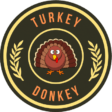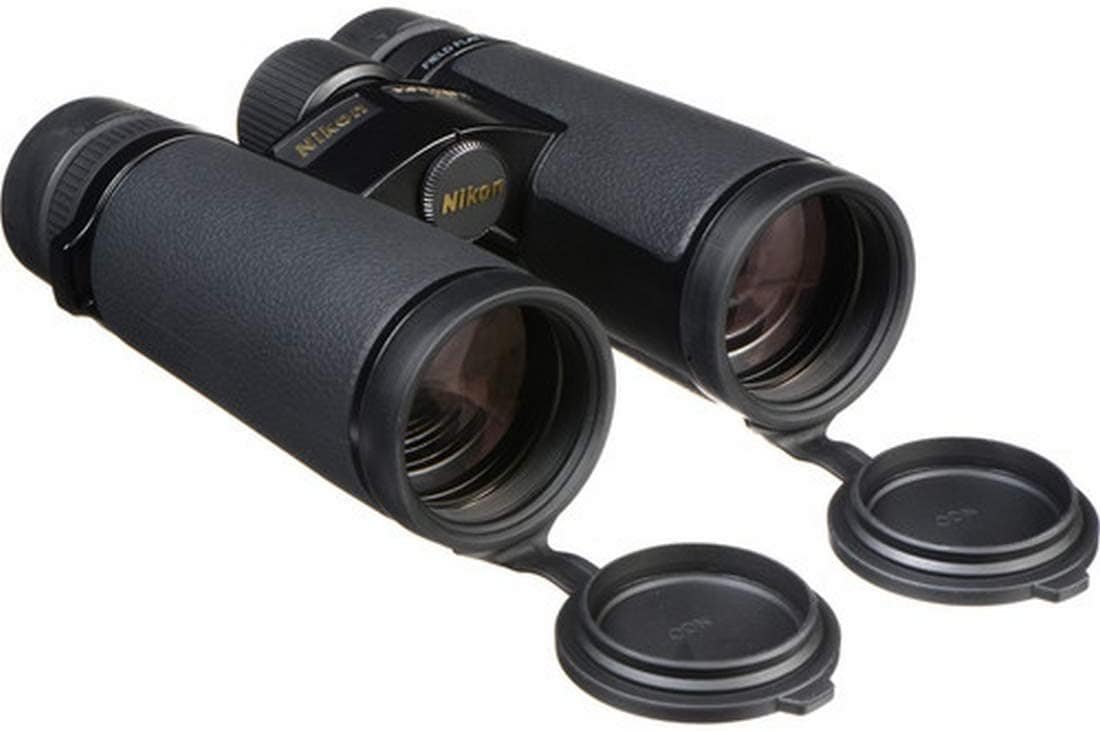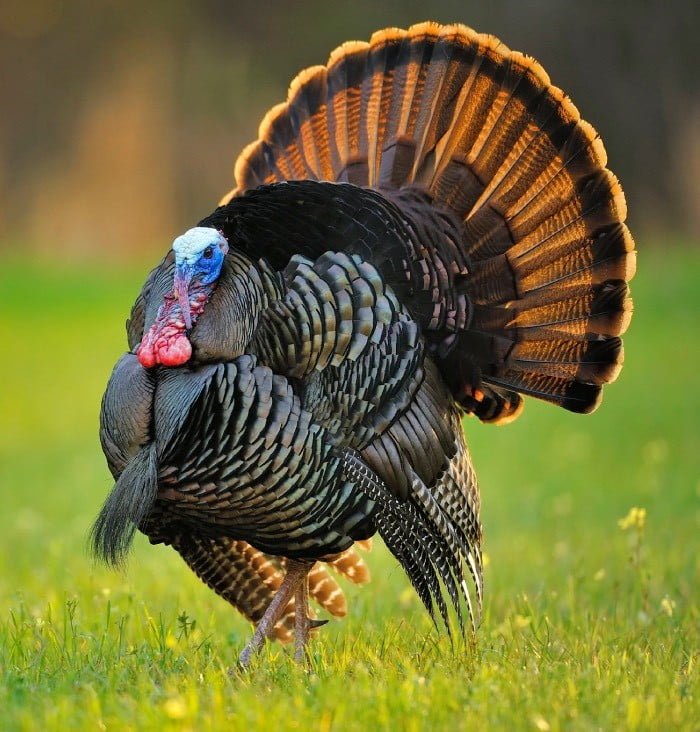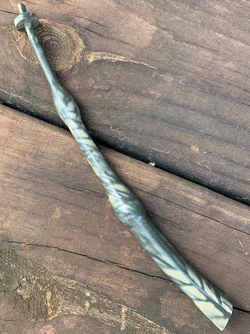New York Turkey Season: A Bounty of Hunting Delights
Hunting is an esteemed outdoor activity deeply ingrained in the cultural fabric of New York State. With its diverse landscapes, abundant wildlife, and a vast array of hunting opportunities, it comes as no surprise that hunting enthusiasts flock to this region year after year. New York turkey season holds a special place due to its challenging nature and the thrill it brings to those seeking an adrenaline-filled adventure amidst picturesque surroundings. Turkey hunting season in NY is a highly anticipated time for both seasoned hunters and novices
The state’s fall turkey season allows dedicated athletes to engage with nature, challenge their skills, and immerse themselves in the rich tapestry of New York’s wilderness. Beyond its recreational value, turkey hunting also plays a vital role in wildlife management efforts by helping to maintain balanced populations and control potential agricultural damage caused by these magnificent birds.
Hunting – A Popular Outdoor Activity in New York State
New York State has long been renowned for its vibrant outdoor culture, where hunting is integral to many residents’ lives. From the towering peaks of the Adirondacks to the sprawling forests of the Catskills and Finger Lakes regions, NY offers diverse hunting opportunities throughout its vast territory.
Whether pursuing big game like deer or bear or engaging in upland bird hunts for grouse or pheasant, hunters are drawn to this state for its abundant wildlife resources. The appeal of hunting lies not only in harvesting games but also in experiencing nature firsthand and honing one’s skills as a proficient outdoorsman.
Engaging with the natural world on such intimate terms fosters a deep appreciation for conservation efforts and environmental stewardship among those who participate. The camaraderie formed through shared experiences during hunting seasons creates lasting bonds between friends and family while fostering respect for the land and wildlife.
Turkey Hunting Season in NY and Its Significance
Among the various hunting opportunities available in New York, the turkey hunting season stands out due to its unique challenges and rewards. The New York State Department of Environmental Conservation (DEC) carefully manages the turkey population to ensure sustainable harvests while maintaining healthy populations across the state. The fall turkey season, specifically designated for hunters pursuing these magnificent birds, allows enthusiasts to test their skills against one of the wiliest game species in North America.
NYS fall turkey season typically coincides with when turkeys feed actively before winter. This optimal timing allows hunters to capitalize on turkeys’ natural patterns, increasing their chances of success. However, it is important to note that turkey hunting requires skill, patience, and understanding of turkey biology and behavior. By immersing themselves in this challenging pursuit, hunters gain a deeper appreciation for these creatures while contributing to conservation efforts through responsible harvest practices.
The Diversity of New York Turkey
As hunters gear up for the much-anticipated turkey hunting season in NY, it is crucial to understand the different turkey species that inhabit this diverse state. New York has four main turkey species: Eastern, Osceola, Rio Grande, and Merriam’s. Each species has unique characteristics and can be found in specific state regions.
The Eastern turkey is the most abundant and widely distributed species in New York. It thrives in various habitats, including woodlands, fields, and agricultural areas.
Recognized by its rich brown plumage and distinctive black-tipped feathers on its tail fan, the Eastern turkey has become a symbolic game bird for hunters during the New Fall turkey season.
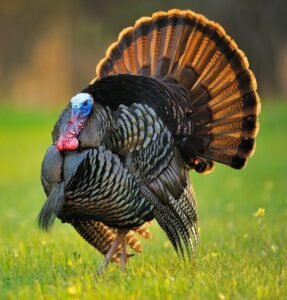
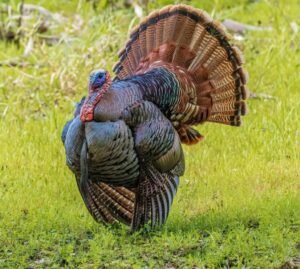
In contrast to the prevalence of Eastern turkeys across most of New York State, Osceola turkeys are found only in limited regions within southwestern Florida.
Although not native to NY, some hunters may be interested in pursuing these birds during out-of-state hunting trips. This preference among hunters is due to the Osceola turkey’s unique behavioral characteristics and the distinct challenge they present.
The third species adventurous hunters can encounter is the Rio Grande turkey (Meleagris gallopavo intermedia). Native to western Texas and parts of Mexico, it has been introduced into various regions across North America.
While not as numerous as their Eastern counterparts during NY turkey or New York turkey season, Rio Grande turkeys have adapted well to certain areas within NY due to suitable habitats.
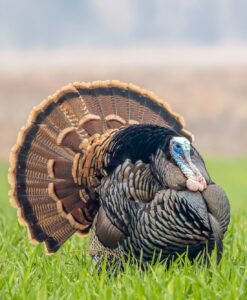
Turkey Behavior and Habitat Preferences
Understanding turkeys’ behavior patterns and habitat preferences is essential for successful hunting ventures during the fall turkey season or any other time of year. Turkeys are diurnal creatures with highly developed senses, making them both challenging and exciting to pursue.
During the day, they forage on a diverse diet of seeds, insects, fruits, and vegetation. Regarding habitat preferences, turkeys are versatile but generally gravitate towards areas that provide suitable roosting sites, such as mature trees with large branches for secure perching.
They also favor areas with abundant food sources and sufficient cover to protect against predators. Woods adjacent to farmland or open fields often provide ideal conditions for turkeys during turkey hunting season ny.
Scouting and Understanding Turkey Patterns
Scouting is crucial to preparing for turkey hunting season ny or any hunting pursuit. It involves gaining knowledge about the local turkey population’s habits and movements to increase the chances of a successful hunt.
By scouting before the season, start hunters can identify roosting areas, feeding zones, travel routes, and strutting grounds. Understanding turkey patterns is an art that requires observation and interpretation of signs left behind by these elusive birds.
Tracks in soft soil or snow can reveal their direction of travel, while finding roosting trees displaying scratch marks can indicate preferred roosting sites. Additionally, listening for vocalizations during early morning hours aids in locating turkeys.
The importance of scouting cannot be overstated; it allows hunters to strategize effectively during New York turkey season. By identifying key areas where turkeys frequent regularly, hunters can position themselves strategically within calling range when the action begins.
Regulations and Licensing
The Specific Dates for Turkey Season in NY
Turkey hunting season in the beautiful state of New York is eagerly awaited by hunters every year. It offers a thrilling opportunity to venture into the bountiful wilderness and test one’s skills against the wily and elusive turkey.
To ensure a successful and legal hunt, it is crucial to be well-informed about the specific dates for turkey season in NY. In New York State, turkey hunting season typically spans from early May to late May, providing hunters with a limited opportunity to pursue their passion.
However, it’s important to note that these dates can vary slightly yearly. It is advisable to consult the official New York State Department of Environmental Conservation (DEC) website or contact local DEC offices for up-to-date information regarding the exact start and end dates for each turkey hunting season.
Licensing Requirements for Residents and Non-residents
Before embarking on an exciting turkey hunting adventure in NY, hunters must ensure they possess the appropriate licenses and permits as mandated by state regulations. The licensing requirements differ between residents and non-residents. For residents of New York State, an annual small game license is generally required, which includes privileges for both spring and fall turkey seasons.
Additionally, resident hunters must possess a turkey permit for each season in which they intend to participate. These licenses can be easily obtained through various means, such as online applications or authorized licensing agents across the state.
Non-resident hunters who wish to partake in NY’s turkey hunting season must obtain a non-resident small game license and a separate non-resident spring or fall turkey permit, depending on their desired season of participation. These licenses allow visitors to experience the thrill of hunting wild turkeys amidst New York’s picturesque landscapes.
Special Regulations or Restrictions in Certain Regions
While turkey hunting season in NY generally follows statewide regulations, it is essential to be aware of any special or specific regulations that may apply to certain regions. The New York State Department of Environmental Conservation strives to ensure sustainable hunting practices and protect wildlife populations by imposing certain restrictions in designated areas.
For instance, there might be restrictions on using specific hunting devices such as crossbows or requiring hunters below a certain age to be accompanied by a licensed adult. Additionally, there could be bag limits or rules regarding harvesting specific turkey species during different seasons.
These regulations are implemented to maintain healthy turkey populations and preserve the unique ecological balance within various regions of New York State. Before venturing into any particular region for turkey hunting, it is crucial for hunters to thoroughly study the DEC’s official guidelines and consult local authorities or experienced hunters who possess an intimate knowledge of the area’s specific regulations.
Adhering to these rules can contribute to responsible hunting practices and ensure that future generations can relish the thrill of NY’s turkey season.
Preparing for Turkey Season
Equipping Yourself for Success
It would be best if you armed yourself with appropriate equipment to embark on a rewarding turkey hunting expedition during the esteemed New York turkey season. Firstly, selecting the right shotgun is paramount. Most hunters opt for 12-gauge or 20-gauge shotguns, as they offer an optimal balance between power and maneuverability.
Ensure your shotgun is chambered for turkey-specific loads, such as those containing larger shot sizes like #4, #5, or #6. Ammunition selection is equally important.
Consider using high-density tungsten or heavy lead loads that provide ample knockdown power and effective range. With turkeys possessing keen eyesight, blending seamlessly into your surroundings is crucial.
Thus, investing in quality camouflage clothing that matches the fall foliage prevalent during the NY turkey season will enhance your chances of concealing yourself effectively from these wary birds. Remember to don face masks and gloves in coordinating patterns to eliminate exposed skin that could betray your presence.
Selecting Decoys and Calls: An Art of Deception
Deception is pivotal in outwitting turkeys during their fall courtship phase in New York’s bountiful woods. To lure these elusive birds within range, skilled hunters utilize decoys strategically placed near their hunting location.
When considering decoy options, evaluate different types such as Jake (young male), hen (female), and Strutter (dominant male). Each type elicits distinct reactions from turkeys during various stages of the mating season.
During the NY turkey season, selecting appropriate calls can make all the difference between a successful hunt and a fruitless endeavor. Box calls are popular due to their versatility; they produce many turkey vocalizations, such as yelps, clucks, purrs, and even gobbles.
Alternatively, slate calls provide a mellower sound and are excellent for producing soft purrs and clucks, ideal for enticing wary toms close. For those seeking a more challenging but rewarding option, mastering mouth calls allows hunters to produce realistic turkey sounds hands-free, adding more concealment to their strategy.
By thoughtfully selecting shotguns, ammunition, camouflage clothing, decoys, and calls tailored to the nuances of the NY turkey season, you position yourself with an arsenal that maximizes your potential for success in pursuing these magnificent birds. Remember, attention to detail and understanding the particular needs of turkeys during fall courtship will greatly enhance your chances in this thrilling endeavor.
Hunting Techniques and Strategies
Overview of Common Techniques Used during Turkey Season
During the highly anticipated turkey hunting season in New York, hunters employ various techniques to increase their chances of success. Two widely practiced methods include roosting turkeys the night before a hunt and setting up blinds or natural cover for concealment. Roosting, an integral part of turkey hunting, involves locating where turkeys spend their nights before flying down to feed in the early morning.
This technique allows hunters to identify potential hunting spots and plan their approach accordingly. By observing roosting patterns, hunters can anticipate where the birds will be at daybreak and strategize accordingly.
In addition to roosting, setting up blinds or utilizing natural cover is essential for effective concealment during turkey hunts. Turkeys have exceptional eyesight and can easily detect any movement or unfamiliar shapes.
Hunters often choose suitable locations with good visibility and set up ground blinds or utilize available vegetation as natural cover while ensuring they are well hidden from the keen eyes of these wily birds. Using existing tree lines, bushes, or fallen logs can provide an effective backdrop for blending into the environment.
Calling Techniques to Attract Turkeys
Calling is a fundamental aspect of turkey hunting that aims to emulate the sounds made by turkeys during various scenarios, such as feeding, mating, or simply communicating within a flock. You can significantly enhance your chances of luring curious gobblers toward your location by mastering calls like yelping, clucking, and purring.
Yelping is perhaps one of the most versatile calls used during turkey hunts, as it mimics various vocalizations made by both hens and gobblers throughout different situations. It consists of a series of high-pitched notes that serve as general invitations for social interaction among turkeys.
Clucking, on the other hand, is a softer call that signifies contentment and is often used by hens to gather their young or signal their location to other flock members. By perfecting the art of clucking, hunters can create a sense of comfort and familiarity for turkeys in the area.
Purring, characterized by soft and rolling sounds created by rapid exhalations, is an effective call miming relaxed turkeys feeding or resting nearby. This gentle purring sound can effectively calm wary birds and entice them to approach.
To truly excel in calling techniques, learning how to mimic various turkey vocalizations accurately is essential. This includes imitating the gobble of a male turkey during breeding season or replicating the sounds produced by hens during mating rituals.
Understanding these vocalizations and practicing their accurate rendition can make a substantial difference in attracting turkeys within range during your hunting expeditions in New York’s thrilling turkey hunting season. Mastering these hunting techniques and strategies will equip hunters with valuable skills necessary for successful encounters with turkeys during the NY turkey season.
Turkey Biology and Behavior
The Mating Rituals and Courtship Displays of Male Turkeys (Strutting)
Male turkeys, known as toms or gobblers, engage in elaborate mating rituals and courtship displays during turkey hunting season in NY. One of the most fascinating behaviors exhibited by male turkeys is strutting, which serves as a display of dominance and attraction towards female turkeys, called hens.
Strutting is a visually mesmerizing spectacle where the male fans out his tail feathers into a beautiful semi-circular shape while drooping his wings slightly. This impressive visual display showcases the vibrant colors and intricate patterns of their feathers.
Accompanying their striking appearance, toms emit deep, resonant gobbles that echo through the woods during early morning hours in anticipation of attracting nearby hens. Gobbling is a territorial announcement to other males and an alluring call to potential mates.
As part of their courtship ritual, male turkeys puff up their bodies, inflate air sacs near their chests, and produce deep purring sounds by vibrating specialized feathers on their breasts called “fiddle feathers.” Additionally, they exhibit a behavior known as drumming, where they rapidly beat their wings against air to create a distinct sound similar to distant thunder. These courtship displays attract female attention and signal other males that competition for mating rights will be fierce.
Conclusion
As turkey hunting season in NY approaches with renewed excitement each year, hunters eagerly anticipate immersing themselves in nature’s grand theater, where turkey biology intertwines with human endeavor. From studying turkey behavior to understanding their mating rituals, hunters gain a profound appreciation for the intricate dance of life that unfolds in the woods.
The vibrant colors of male turkeys in full strut, the resonant gobbles echoing through the forest, and the anticipation of a successful hunt create an unforgettable experience. By participating in turkey hunting season in NY, hunters engage in a time-honored tradition and contribute to conservation efforts as designated seasons and regulations ensure sustainable turkey populations.
As you embark on your adventures during the New Turkey season, respect nature, follow all regulations, and cherish every moment spent observing these magnificent creatures. May each hunt be filled with camaraderie, gratitude for nature’s beauty, and the thrill of chasing elusive gobblers.
